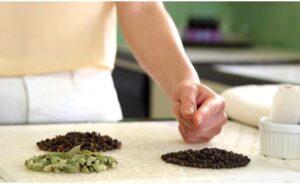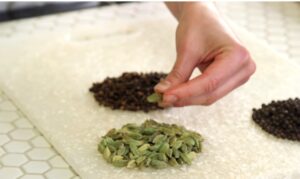When Yoga trainees have woken up from their final relaxation after a practice of Yoga session and are seen emerging bright and peaceful from the stillness of their mat, the last thing you want to do is spin out into the noise, the chaos and stress of the outside world.
It is too contrasty and practitioners often need some time to digest their yoga experience and slowly transition back to their daily lives, which is why, for many yoga scholars, the bridge between yoga and the high-intensity rhythm outside it’s a cup of hot tea.
Many studios serve tea, usually after class, as a way to offer students a chance to bask in the buzz of yoga, people are very open after yoga, and tea offers a perfect transition from new to its reality, tea is an informal yoga tradition that has taken root in recent years, and increasing awareness of the various benefits of tea has made it a welcome addition to yoga classes as one more way to embrace The healthy life. While not a ritual process per se, the tradition of combining tea and yoga has an ancient connection.
Tea and its relationship with the practice of Yoga
Yoga and Ayurvedic medicine go hand in hand by offering tea as part of your home cooking yoga classes, for example Yogi Tea, which is a homemade spiced tea, which includes traditional Ayurvedic spices such as cloves aroma, black pepper, cinnamon, cardamom and ginger, in a base of black tea, sweetened with milk and honey.
The recipe was inspired in the 1960s by Yogi Bhajan who served the tea to his students, however many teachers have taken a step away from this traditional recipe and are serving beverages ranging from green tea to roasted barley with mixed herbs.
In addition to the calming and healing properties, the central idea behind a post-yoga cup of tea is about the social bonding and unity it creates among students, it is very much about community, the opportunity to get to know one another, as well as the opportunity to be a part of that energy and to hold that energy as well.
Other teachers agree that tea can help facilitate learning and discussion, where yoga students meet after their hour-long class for tea and philosophical discussion, and these gatherings are described as significantly more social than, say, a Japanese tea ceremony, whether used for its mystical or medicinal properties, tea has become an integral part of yoga, and students seem to have no problem warming up with a cup and living the experience.
Satisfaction with Tea Consumption when practice of Yoga
While there is no rule book for serving tea with practice of Yoga, there are some ways to enrich the experience by setting the right mood. Inviting all the senses emphasizes maintaining a clean and tidy space; the addition of precious objects, works of art (flowers); serve tea in a porcelain or wooden cup; playing with light, meditation music; and the use of incense such as sandalwood which is very grounding.
Basically, you need to feel as if you are entering a special zone that is separate from the stresses of everyday life.
The tea can be paired with homemade vegetarian health food or vegetarian soups such as black bean, pumpkin curry, or potato health enhancing things, no processed food, serve only the finest tea, be sure to use good quality tea loose leaf to enhance the experience of it all, which is more healing and beneficial, it is advised if you want to use fine china, make it comfortable, it is about creating a space where yoga practitioners feel welcome, loved and nurtured should eliminate factors that cloud the moment to prepare and serve the tea.
Sometimes when people add more veggies and fiber-filled foods to their plate, their digestive systems don’t cooperate very well and uncomfortable physical issues arise, these not-so-impressive potty trips and embarrassing moments of gassy situations have given the fiber.
But fiber really is your friend, you just have to get to know things a little better and learn some simple guidelines about fiber, in a nutshell, fiber is vegetable fiber is the part of vegetables, fruits, legumes, cereals, fruits nuts and seeds that resist digestion.
Fiber helps cleanse your digestive system and get rid of the stuff i.e. excess hormones, cholesterol, toxins, and waste that shouldn’t be there, fiber also provides a host of other health benefits, including colon wellness and intestinal bacterial balance.
In addition, fiber-rich foods are essential for a strong immune system, faster metabolism and weight management, diabetes and cardiovascular disease prevention, beautiful skin, and better overall health in yoga practices.
Insoluble fiber has a laxative effect and is found in the skin of fruits and vegetables, in wheat, wheat bran, rye and rice. It does not dissolve easily in water so it is added to the fecal mass, it is crucial for the abundant movements of healthy working abundant intestines which must be excreted at least once or twice a day.

Fiber and its Benefits when practice of Yoga
Soluble fiber absorbs fluids, swells and is easily digested by intestinal bacteria, ferments and produces gas in the digestive tract, this may not sound all that appealing, but it is very important for colon health.
Soluble fiber creates a feeling of fullness and is the type of fiber responsible for lowering LDL or bad cholesterol, you have to look a little further on soluble fiber in the diet, but athletes include chia seeds in their diets , flax seeds, oats, oat bran, barley, lima beans, lentils, psyllium and most nuts especially walnuts and almonds.
There is a big difference between how much fiber the average person is eating and how much they should be eating for optimal health, the recommended intake for disease prevention is 14 grams of fiber per 1,000 calories consumed, with an average of at minus 38 grams per day for men and 25 grams per day for women.
Many health authorities, however, recommend eating more fiber to improve your chances of overall health and wellness, however, the average fiber intake is about half of what is recommended at 16 to 18 grams a day for men and 12 to 14 grams per day for women.
Loose stools are often the first sign that you may be getting too much fiber, or an improper balance of soluble and insoluble fiber, an increase in total fiber, especially jumping too quickly can cause gas and bloating, but, it is actually the fermentation of soluble fiber in the colon that produces these issues, soluble fiber is processed in the colon undigested and when broken down by intestinal bacteria, the results are gas.
Are nuts rich in fiber and good for Yoga practices?

Beans and nuts have a lot of soluble fiber, lettuce has mostly insoluble fiber, irritable bowel syndrome and other digestive disorders affect the amount of gas that moves through the intestinal tract and can increase the intestinal flatulence, as well as abdominal distension and painful discomfort.
Like anyone new to a high-fiber diet, people with sensitive or otherwise troubled digestive systems should increase fiber intake slowly and ensure a mix of both soluble and insoluble fiber-rich foods.
Soluble fiber like the kind found in chia seeds and flaxseeds help soften stools and support happy bowel movements with minimal discomfort, raw vegetables and cruciferous vegetables can provide special challenges for people with disorders digestive problems, if this is the case, eat smaller amounts or thoroughly vegetables that can give some relief.
To avoid the constipation that often goes hand in hand with extra gas and bloating, be sure to increase your fluid intake as you increase your fiber and nut intake to make your yoga practices easier.
This Other Extraordinary Publication “Practicing These Simple Yoga Tips Will Make You Feel Better Overall” You may be interested Enter and check it out!!!
I hope you liked the publication of this article emphasizing “Practice Yoga Consuming Tea, Nuts and Foods with Fiber Content”. You can share your opinions and experiences with me in the comments section.


